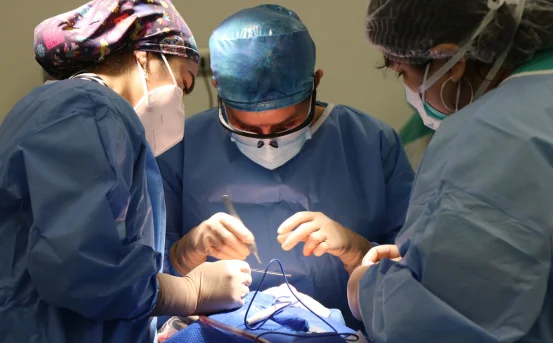Endovascular surgery is a modern, minimally invasive technique used to treat diseases of the blood vessels. Unlike traditional open surgery, endovascular procedures are performed using small incisions and catheters inserted into the vascular system, offering patients quicker recovery, reduced pain, and lower risk of complications. The endovascular surgery procedure enhances these benefits even further.
But what exactly happens during endovascular surgery? Whether you’re a patient preparing for surgery or someone researching vascular treatment options, this guide will provide clarity and confidence.
What is Endovascular Surgery?
Endovascular surgery refers to a group of procedures that treat vascular conditions from within the blood vessels using catheters, wires, balloons, and stents. These are navigated through arteries or veins under imaging guidance to:
- Open blocked arteries
- Repair aneurysms
- Remove blood clots
- Close abnormal vessels
This approach avoids large incisions and direct exposure of blood vessels, making it a preferred option for many vascular problems.
The endovascular surgery procedure is preferred for its effectiveness and reduced recovery time.
Conditions Treated by Endovascular Surgery
Endovascular procedures are used for:
- Aneurysms (e.g., abdominal or thoracic aortic aneurysm)
- Peripheral artery disease (PAD)
- Carotid artery stenosis
- Deep vein thrombosis (DVT)
- Pulmonary embolism (PE)
- Varicose veins
- Renal artery stenosis
- Vascular trauma or bleeding
Endovascular Surgery Procedure
Medical Evaluation and Diagnosis
Before the procedure, a vascular surgeon or interventional radiologist will:
- Review your medical history
- Conduct a physical exam
- Order diagnostic tests such as:
- CT angiography
- Doppler ultrasound
- MRI or MR angiogram
- Blood tests
- CT angiography
These help assess the extent of disease and plan the approach.
Preoperative Instructions
- Fasting :- You’ll be asked to stop eating and drinking 6–8 hours before the procedure
- Medications :- Some medications, especially blood thinners, may need to be adjusted
- Consent :- You’ll sign a form after the procedure, risks, and benefits are explained
- Hydration & Allergies :- Let your care team know if you have any dye or contrast allergies
Endovascular Surgery Procedure
The exact steps vary based on the condition and procedure (e.g., stent placement, embolization, thrombectomy), but most follow a general structure:
- Arrival and Preoperative Setup
- You arrive at the hospital or surgical center
- A nurse places an IV line in your arm for medications and fluids
- You change into a surgical gown and lie on the operating table
- Vitals (heart rate, BP, oxygen levels) are monitored continuously
- Anesthesia Administration
Endovascular surgeries typically use:
- Local anesthesia at the insertion site (groin or arm)
- Sedation to keep you relaxed
- General anesthesia in more complex procedures (e.g., aneurysm repair)
- Sterile Preparation
- The surgical site (usually the groin or wrist) is cleaned with an antiseptic
- A sterile drape is placed to prevent infection
- Vascular Access
- A small incision (usually 2–3 mm) is made in the skin over a major artery—commonly the femoral artery in the groin or radial artery in the wrist
- A sheath (a small tube) is inserted into the artery to keep it open
- Insertion of Catheter and Guidewire
- A thin guidewire is threaded through the sheath and navigated through the blood vessels to the treatment area
- A catheter (a long, flexible tube) follows the guidewire
This process is done under fluoroscopic imaging (real-time X-ray guidance) to ensure precision.
- Diagnostic Angiography (if required)
- A contrast dye is injected through the catheter
- X-rays or angiographic images are taken to confirm the problem area and guide the treatment
- Performing the Procedure
Based on your condition, different interventions are performed:
- Angioplasty and Stenting :- A balloon-tipped catheter inflates to widen a narrowed artery. A stent (metal mesh tube) may be placed to keep the artery open
- Aneurysm Repair (EVAR or TEVAR) :- A stent-graft is inserted into the aneurysm to reinforce the vessel wall and prevent rupture. It is deployed precisely to seal off the aneurysm from blood flow
- Thrombectomy or Thrombolysis :- A clot-removing device or clot-dissolving drugs are used to clear blockages caused by blood clots (e.g., DVT or PE)
- Embolization :- Small coils or particles are placed to block blood flow to an abnormal area, like a tumor or bleeding vessel
- Completion and Closure
- After the device or stent is deployed, final images confirm success
- The catheter and sheath are withdrawn
- Recovery Room Monitoring
- You are taken to a recovery area
- Vitals and the access site are monitored for 1–3 hours
- Most patients can sit up and walk within a few hours
- Some may need overnight observation, especially after aneurysm repair
Recovery and Post-Operative Care
What to Expect:
- Mild bruising or soreness at the insertion site
- Temporary fatigue or dizziness
- Instructions to limit lifting or strenuous activity for a few days
Do’s and Don’ts:
- Keep the wound clean and dry
- Take prescribed medications, including blood thinners if needed
- Attend follow-up visits for imaging or check-ups
- Report symptoms like leg pain, swelling, chest discomfort, or fever
Back to Normal:
- Most patients resume normal activities within 3–7 days
- Full recovery may take longer in complex cases
Advantages of Endovascular Surgery
Minimally invasive
Reduced hospital stay
Less pain and scarring
Lower risk of complications
Suitable for high-risk or elderly patients
Faster return to daily life
Risks and Complications
Though rare, possible complications include:
- Bleeding or hematoma at the puncture site
- Blood vessel injury
- Allergic reaction to contrast dye
- Blood clots or embolism
- Infection
- Stent movement or re-narrowing
Always discuss potential risks with your vascular surgeon based on your individual case.
Conclusion
Endovascular surgery is a groundbreaking alternative to traditional vascular surgery, offering effective treatment with minimal discomfort and downtime. Whether you’re dealing with a blocked artery, aneurysm, or blood clot, this procedure provides a safe, modern approach to restoring blood flow and preventing life-threatening complications.
Being informed about the step-by-step procedure helps reduce anxiety and empowers you to take an active role in your care. If your doctor recommends an endovascular treatment, you can feel confident in the precision and safety that this technique offers.























